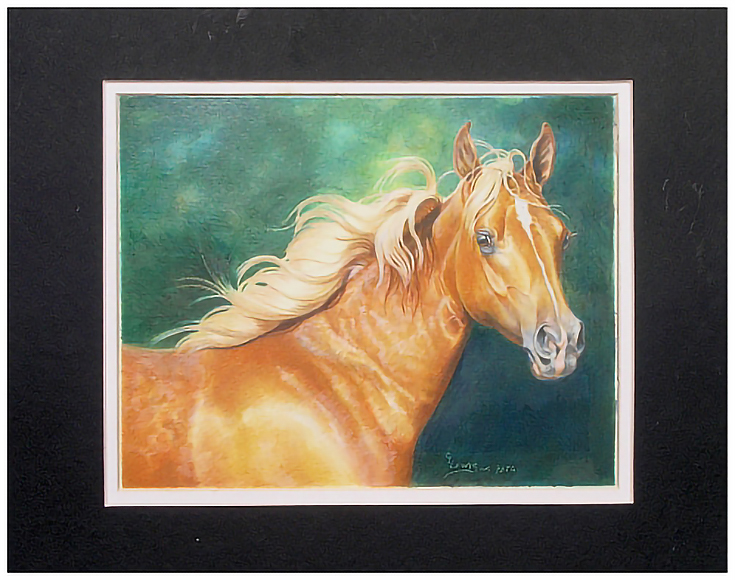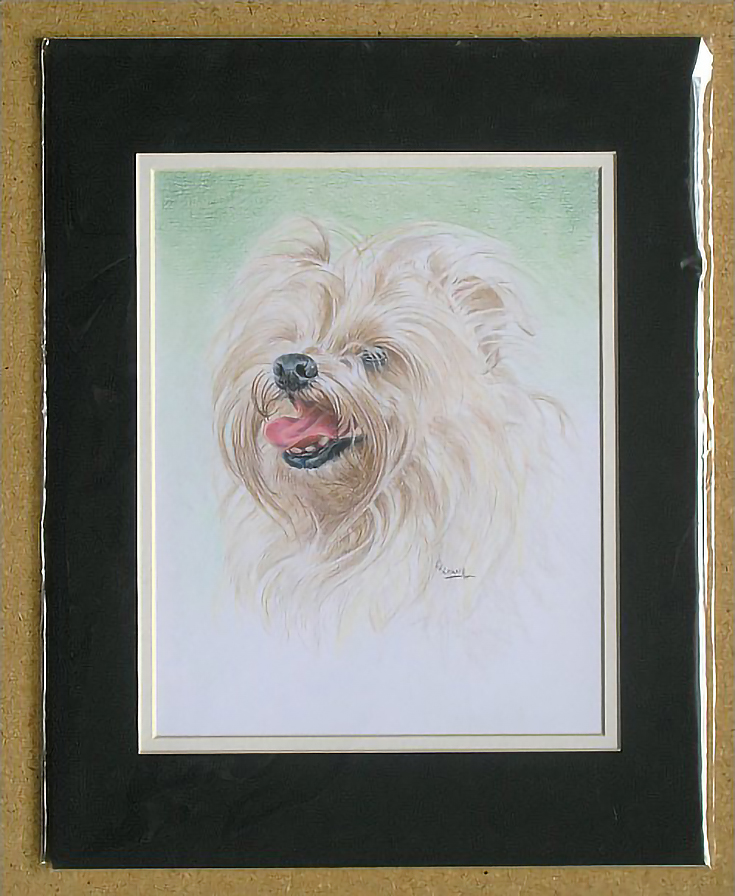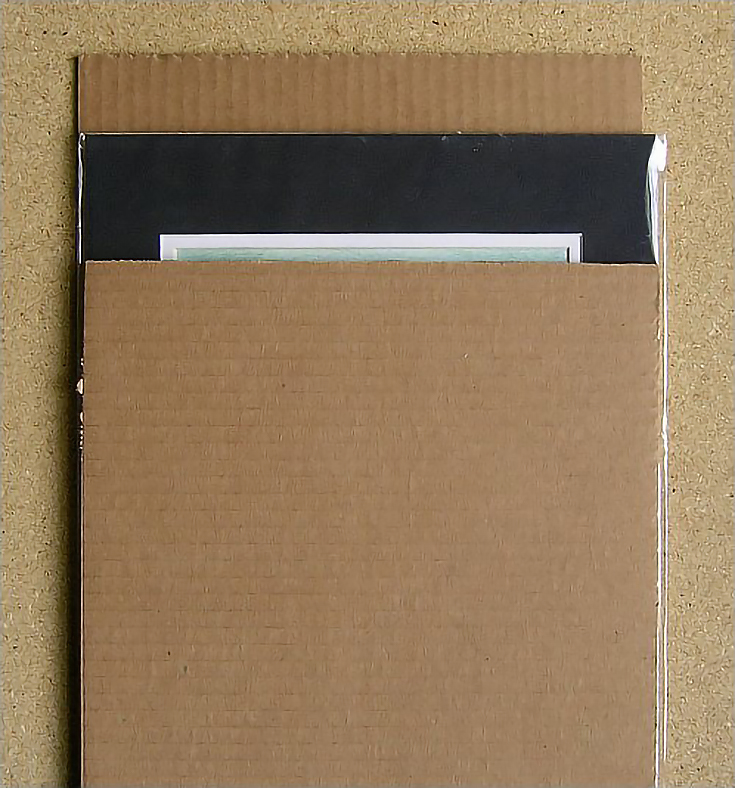For the professional artist—or anyone who hopes to make money producing and selling art—creating finished artwork is only part of the process. Marketing and delivery are also part of the art equation.
Today, I’m going to address the delivery process. More specifically, long distance delivery, with the goal of looking professional every step of the way.
Remember—your artwork (as well as the way it’s presented) reflects you!
So it’s very important to present your artwork to buyers or potential buyers in the most professional manner possible. There are many different ways to do this, but I’ve developed an easy and low-cost method that works whether you’re shipping your artwork across the state or around the world.
NOTE: I wrote the following information with colored pencil artwork in mind, but it should apply equally as well for any flat, unframed works of art you may have.
1. Start with a mat
A mat is a picture border of stiff material placed around a picture to act as a simple frame or decorative edge within a frame.
Mats range in quality from non-archival to museum quality. The higher the archival quality, the less likely harmful substances will seep from the matting material into the artwork (a process called “leaching”). Use the highest quality mat you can afford, especially for long-term framing.
Mats can be purchased in bulk in a variety of stock sizes and colors. They are available as singles (one mat) or doubles (two mats combined, one slightly smaller than the other).
I prefer double mats in off white, but also use double white, double black, or two-color double mats. This illustration shows a white inside mat paired with a black outer mat.
If you create a lot of artwork of the same size, you can save money by buying that size of mat in bulk from online art supply stores. Basic colors such as black, white, and ivory are available as single or double archival or museum quality mats.
With some suppliers you can also purchase two-color archival mats in a variety of color combinations.
Online framing companies can also cut mats to order. The cost is higher, but you can match colors to each piece of art and present your buyer with a unique package.
Archival backing material can be purchased from the same suppliers and also comes pre-cut in stock sizes or cut to order.
For every drawing you need to ship, use framing tape to affix the drawing to the back of the mat. Add the backing material and you’re ready for the next step.
2. Package for presentation
Shrink wrapping materials are available from a wide selection of suppliers. All you need is the plastic, tape, and a hair dryer. Wrap the matted artwork in plastic, tape the edges, and use the hair dryer to shrink the plastic around the artwork. If done carefully, the result is a professional looking package that keeps the artwork and mat clean during transit.
If shrink wrapping isn’t appealing, you can also use resealable plastic envelopes. (This is the method I use). Available in a variety of sizes, these archival envelopes are completely transparent and self sealing. Just insert the artwork, peel off the strip covering the adhesive on the flap, and press the flap into place.
Envelope sizes are geared to fit standard mat sizes so you be certain to find something to fit your work.
The additional advantage to these envelopes is that they are heavier than most shrink wrap, so they provide more protection for shipping. They can be purchased in bulk from online suppliers or in smaller quantities from art and other stores. Search “clear plastic shipping envelopes” to find suppliers online or near you.
The artwork below is shown matted and packaged inside a clear plastic envelope, ready for shipping or display.
3. Protect prior to shipping
Cut two pieces of ordinary corrugated cardboard to the same size as the matted artwork. You can purchase cardboard from a variety of locations such as shipping and shipping supply companies or online. It’s low cost and easy to purchase in bulk if you use a lot of it.
You can also save shipping boxes that come into your home and studio. When you’re ready to ship artwork, find a box that’s close to the size you need and trim it to size. Not only are you saving time and money by not having to make a supply run, you’re also recycling cardboard and reducing waste.
If you need a larger piece of cardboard, check out the neighborhood grocery, furniture or appliance store. Refrigerator and file cabinet boxes are ideal for cutting packing sheets from.
Cut your cardboard to the same size as the artwork or slightly larger, and lay them sandwich-style. In the illustration below, I’ve staggered the bottom layer of cardboard, the artwork, and the top layer of cardboard so you can see how it should look:
Notice the ribbing in the piece over the artwork is horizontal in the illustration above. The piece under the artwork is vertical. The reason is that combining the sheets in this manner provides the maximum support and crush resistance possible with two pieces of simple cardboard.
You don’t have to cut your cardboard this way and sometimes you will simply not be able to. But I highly recommend this practice whenever possible.
4. Use high-quality envelopes & boxes
Once you have the artwork safely sandwiched between two pieces of cardboard, slide it into your mailing envelope or shipping box.
With artwork of this type, you don’t need to secure it in any fashion. The cardboard was cut to the same size as the envelope and the artwork, so there will be no shifting or slipping during shipment.
This package is going via United States Postal Service Priority® Mail. The envelope itself is made of Tyvek®, which means it’s puncture and tear proof and moisture resistant.
Envelopes for Priority® and Express® Mail shipping are available from the United States Postal Service website, but you can also order similar envelopes and boxes from other major shipping companies, or from office supply stores.
In closing, shipping your artwork doesn’t have to be a major drain on time and resources if you remember to keep it professional and simple.
Make use of no-cost and low-cost materials, follow the same system every time, and double-check your work. That’s it! If you prepare and package your artwork with care, your buyers will thank you—and be much more likely to come back for more.
This post may contain affiliate links.




